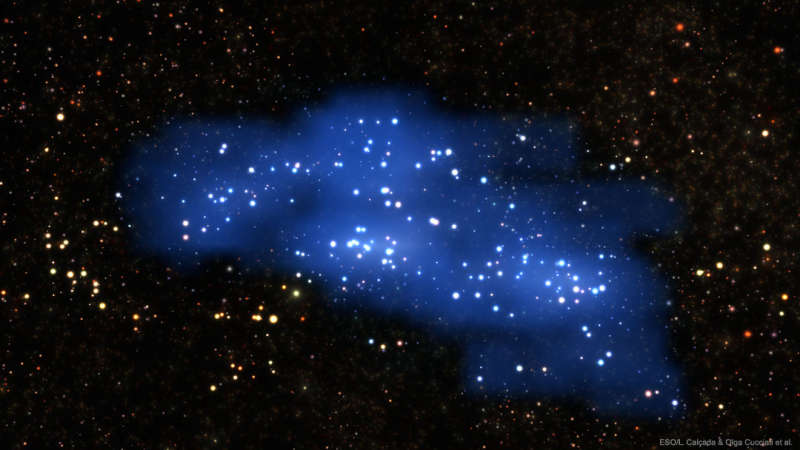Explanation: How did galaxies form in the early universe? To help find out, astronomers surveyed a patch of dark night sky with the Very Large Telescope array in Chile to find and count galaxies that formed when our universe was very young. Analysis of the distribution of some distant galaxies (redshifts near 2.5) found an enormous conglomeration of galaxies that spanned 300 million light years and contained about 5,000 times the mass of our Milky Way Galaxy. Dubbed Hyperion, it is currently the largest and most massive proto-supercluster yet discovered in the early universe. A proto-supercluster is a group of young galaxies that is gravitationally collapsing to create a supercluster, which itself a group of several galaxy clusters, which itself is a group of hundreds of galaxies, which itself is a group of billions of stars. In the featured visualization, massive galaxies are depicted in white, while regions containing a large amount of smaller galaxies are shaded blue. Identifying and understanding such large groups of early galaxies contributes to humanity's understanding of the composition and evolution of the universe as a whole.
1999 2000 2001 2002 2003 2004 2005 2006 2007 2008 2009 2010 2011 2012 2013 2014 2015 2016 2017 2018 2019 2020 2021 2022 2023 2024 2025 |
Январь Февраль Март Апрель Май Июнь Июль Август Сентябрь Октябрь Ноябрь Декабрь |
NASA Web Site Statements, Warnings, and Disclaimers
NASA Official: Jay Norris. Specific rights apply.
A service of: LHEA at NASA / GSFC
& Michigan Tech. U.
|
Публикации с ключевыми словами:
galaxy cluster - Скопление галактик
Публикации со словами: galaxy cluster - Скопление галактик | |
См. также:
Все публикации на ту же тему >> | |
